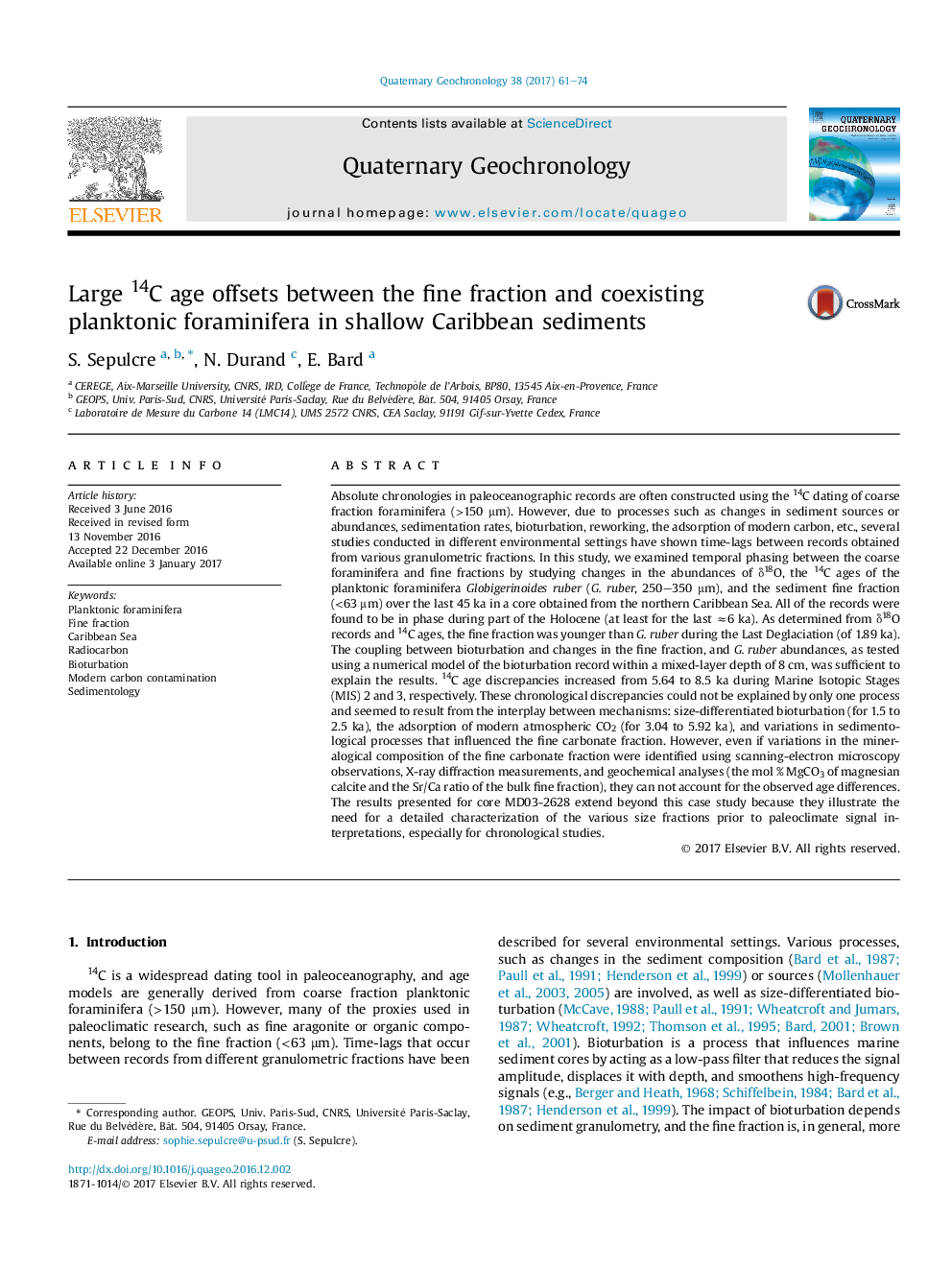| Article ID | Journal | Published Year | Pages | File Type |
|---|---|---|---|---|
| 5785011 | Quaternary Geochronology | 2017 | 14 Pages |
Absolute chronologies in paleoceanographic records are often constructed using the 14C dating of coarse fraction foraminifera (>150 μm). However, due to processes such as changes in sediment sources or abundances, sedimentation rates, bioturbation, reworking, the adsorption of modern carbon, etc., several studies conducted in different environmental settings have shown time-lags between records obtained from various granulometric fractions. In this study, we examined temporal phasing between the coarse foraminifera and fine fractions by studying changes in the abundances of δ18O, the 14C ages of the planktonic foraminifera Globigerinoides ruber (G. ruber, 250-350 μm), and the sediment fine fraction (<63 μm) over the last 45 ka in a core obtained from the northern Caribbean Sea. All of the records were found to be in phase during part of the Holocene (at least for the last â6 ka). As determined from δ18O records and 14C ages, the fine fraction was younger than G. ruber during the Last Deglaciation (of 1.89 ka). The coupling between bioturbation and changes in the fine fraction, and G. ruber abundances, as tested using a numerical model of the bioturbation record within a mixed-layer depth of 8 cm, was sufficient to explain the results. 14C age discrepancies increased from 5.64 to 8.5 ka during Marine Isotopic Stages (MIS) 2 and 3, respectively. These chronological discrepancies could not be explained by only one process and seemed to result from the interplay between mechanisms: size-differentiated bioturbation (for 1.5 to 2.5 ka), the adsorption of modern atmospheric CO2 (for 3.04 to 5.92 ka), and variations in sedimentological processes that influenced the fine carbonate fraction. However, even if variations in the mineralogical composition of the fine carbonate fraction were identified using scanning-electron microscopy observations, X-ray diffraction measurements, and geochemical analyses (the mol % MgCO3 of magnesian calcite and the Sr/Ca ratio of the bulk fine fraction), they can not account for the observed age differences. The results presented for core MD03-2628 extend beyond this case study because they illustrate the need for a detailed characterization of the various size fractions prior to paleoclimate signal interpretations, especially for chronological studies.
